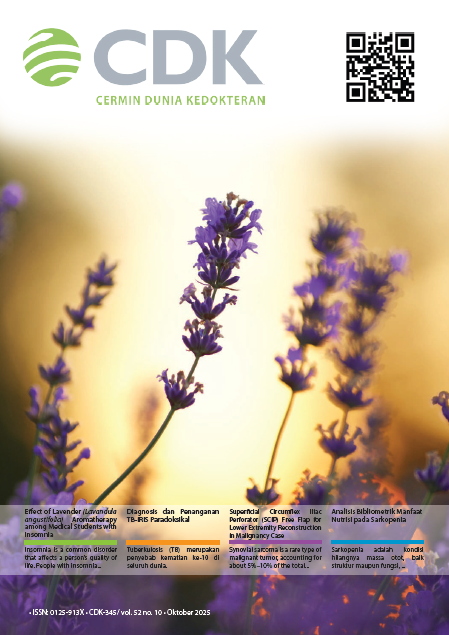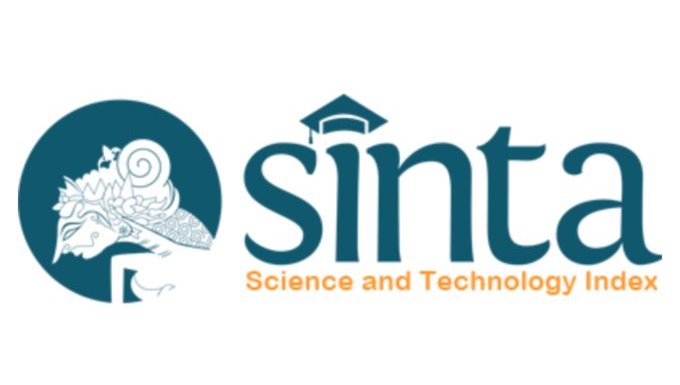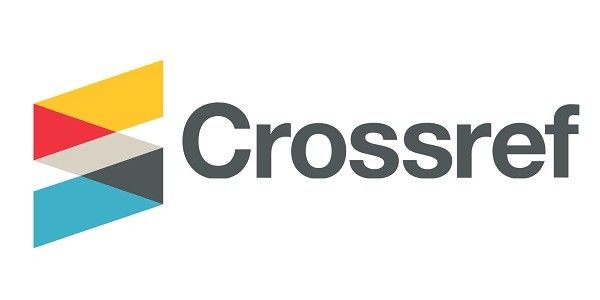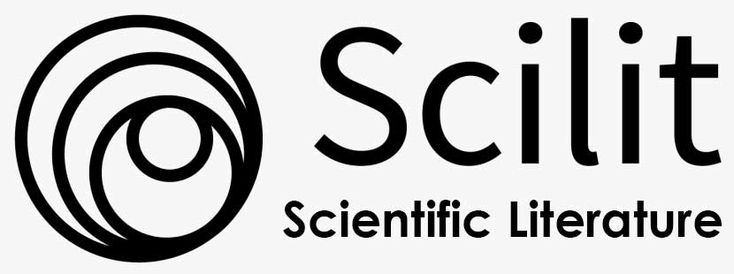The Effect of Andrographolide on the Histopathological Findings of Liver Cells in Male Wistar Rats (Rattus norvegicus) Induced by Carbon Tetrachloride (CCl4)
Research
DOI:
https://doi.org/10.55175/cdk.v52i10.1010Keywords:
Andrographolide, hepatoprotection, hepatocyteAbstract
Introduction: Andrographolide is a group of diterpene lactone isolates from the Andrographis paniculata plant with hepatoprotective properties. Andrographolide gives a hydrogen ion to pair with a free electron from a free radical to form a stable chemical compound and thus decrease liver damage. Methods: This experimental research used a post-test only with a control group design. The samples were mouse's liver (Rattus norvegicus).Twenty-four mice (Rattus norvegicus) were divided into 6 groups: a normal group, a curcumin-treated group as a positive control, a carbon tetrachloride-only group as a negative control, and the treatment group with the dose an andrographolide 50 mg/kgBW group, an andrographolide 100 mg/kgBW group, and an andrographolide 200 mg/kgBW group with 4 mice in each group. Mice were induced with carbon tetrachloride on the first day, then treated with curcumin and andrographolide for 7 days. Liver organs were dissected on day 9 to prepare a specimen for assessing hepatocyte damage (necrosis and hydropic degeneration). Results: Andrographolide showed a hepatoprotective effect on hepatocyte damage after induction by CCl4. The injury score in the normal group is 16.84; the negative control group is 34.36; the positive control group is 11.48; the dose 1 group is 24.92; the dose 2 group is 19.96; and dose 3 is 19.52. In the LSD test, the 50 mg/kgBW and 100 mg/kgBW andrographolide dose groups showed significant differences in hepatocyte damage compared to the normal group. There was no significant difference in liver histopathologic injury score between the normal group and the andrographolide 200 mg/kgBW group (ANOVA, p > 0.05). Conclusion: The best hepatoprotective effect was provided by andrographolide 200 mg/kgBW because the degree of damage is similar to that in the normal group.
Downloads
References
Kumar V, Abbas AK, Aster JC, Robbins SL, editors. Robbins basic pathology. 9th ed. Philadelphia, PA: Elsevier/Saunders; 2013.
Prabowo Y. Efek hepatoprotektor ekstrak Andrographis paniculata nees (sambiloto) terhadap aktivitas alanin amino transferase dalam plasma Rattus norvegicus jantan galur wistar yang diinduksi parasetamol [Skripsi]. Pontianak: Tanjungpura; 2014.
Ye JF, Zhu H, Zhou ZF, Xiong RB, Wang XW, Su LX, et al. Protective mechanism of andrographolide against carbon tetrachloride-induced acute liver injury in mice. Biol Pharm Bull. 2011;34(11):1666–70. doi: 10.1248/bpb.34.1666.
Panjaitan RGP, Handharyani E, Zakiah Z, Manalu W. Pengaruh pemberian karbon tetraklorida terhadap fungsi hati dan ginjal tikus. Makara Kesehatan 2007;11(1):6.
Krisnansari D, Sulistyo H, Ati VRB. Efek propolis terhadap fungsi dan perlemakan hati tikus puti (Rattus norvegicus) model hiperkolesterolemia. Penelit Gizi Makan. 2014;37(1):77–85. https://doi.org/10.22435/pgm.v37i1.4011.77-85.
Sumadiono BG. Stres dan sistem imun tubuh: suatu pendekatan psikoneuroimunologi. Cermin Dunia Kedokt. 2010;154: 13–16.
Dewabratha B, Mahendra AN, Dewi NWS, Sumadi IWJ. Pengaruh ekstrak etanol daun sambiloto terhadap periportal necrosis dan bridging necrosis hepar pada mencit jantan yang diinduksi karbon tetraklorida. 2012;1–7.
Samuhasaneto S, Tong ND. Curcumin decreased oxidative stres, inhibited NF-kB activation, and improved liver pathology in ethanol-induced liver injury in rats. J Biomed Biotechnol. 2009;1:1-8. doi: 10.1155/2009/981963.
Buonomo AR, Scotto R, Nappa S, Arcopinto M, Salzano A, Marra AM, et al. The role of curcumin in liver diseases. Arch Med Sci. 2019;15(6):1608-20. doi: 10.5114/aoms.2018.73596.
Chen HW, Huang CS, Li CC, Lin AH, Huang YJ, Wang TS, et al. Bioavailability of andrographolide and protection against carbon tetrachlorideinduced oxidative damage in rats. Toxicol Appl Pharmacol. 2014;280(1):1–9. doi: 10.1016/j.taap.2014.07.024.
Khedr NF, Khedr EG. Antioxidant and anti-inflammatory effects of curcumin on CCl4 induced liver fibrosis in rats. Am J Biomed Sci. 2014;6(3):191–200. doi: 10.5099/aj140300191.
Rivera-Espinoza Y, Muriel P. Pharmacological actions of curcumin in liver diseases or damage. Liver Int. 2009;29(10):1457–66. doi: 10.1111/j.1478-3231.2009.02086.x.
Downloads
Published
How to Cite
Issue
Section
License
Copyright (c) 2025 Vincent Sanjaya, Andriani, Muhammad In’am Ilmiawan

This work is licensed under a Creative Commons Attribution-NonCommercial 4.0 International License.





















